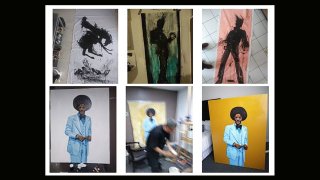
An Escondido man who pleaded guilty to a federal wire fraud charge for selling $1.1 million of forged artworks he claimed were created by acclaimed artist Richard Hambleton was sentenced Friday to three years in prison.
Jason Harrington, 38, admitted to selling forgeries to at least 15 galleries and individuals between 2018 and 2020, according to the U.S. Attorney's Office.
Prosecutors allege Harrington gave prospective buyers letters from people who said they obtained the artworks, in which they claimed to have received the pieces from Hambleton himself. On one occasion, Harrington had a person speak directly with a buyer and make similar claims about obtaining art from Hambleton.
Harrington also photoshopped pictures to make it seem like the people who obtained the artworks personally knew or met with Hambleton, the U.S. Attorney's Office said.
Get Southern California news, weather forecasts and entertainment stories to your inbox. Sign up for NBC LA newsletters.
Hambleton, who died in 2017, was known in part for his "Shadowman" paintings, and many of Harrington's forgeries were copies of Hambleton's Shadowman pieces.
The U.S. Attorney's Office also alleges Harrington tried to sell at least one forged painting that he claimed was made by portraitist Barkley Hendricks. Harrington claimed to be an art gallery owner and said he inherited the painting from his uncle, but the gallery at which he attempted to sell the fake later declined after Hendricks' widow viewed the painting and informed them it was forged.
As part of his plea agreement, Harrington agreed to pay more than $1.1 million in restitution. A restitution hearing is scheduled for February in San Diego federal court.
U.S. & World
News from around the country and around the globe
Acting U.S. Attorney Randy Grossman called the three-year term "a fitting sentence for a defendant who harmed investors, corrupted the integrity of the art market and damaged the historical-cultural record."



